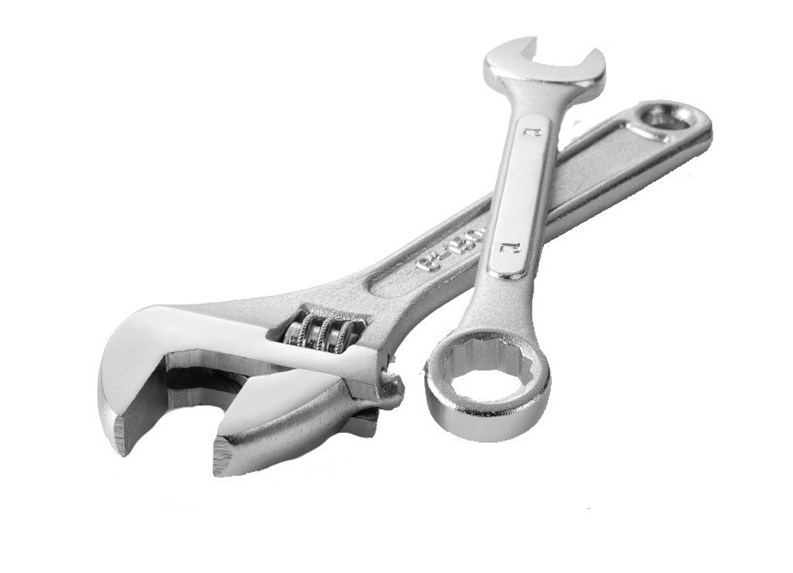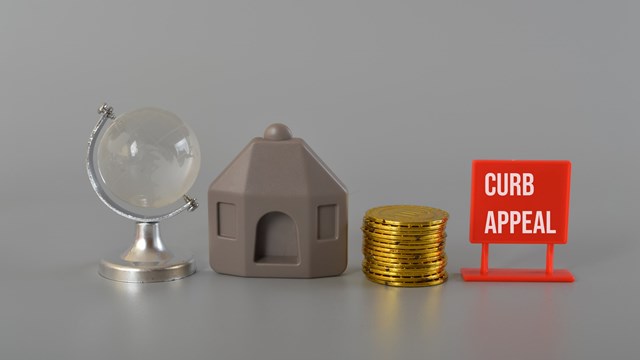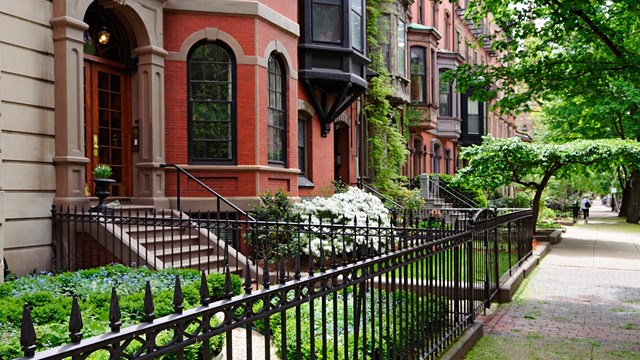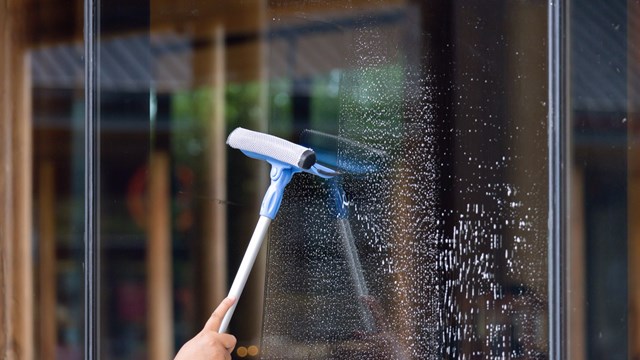There’s the dirt and exhaust from passing cars, motorcycles and trucks, other dirt and grime carried by the wind and the rain—not to mention graffiti, stains from rusted building elements, deposits from birds, and the dreaded mold and mildew. These items stick to the outside of the building like glue, creating layer upon layer of filth and grime.
Unfortunately, a building’s exterior is not necessarily on top of the list of things to keep clean—after all, it will just pile on again, right? However, neglecting a regular exterior cleaning can lead to serious negative effects on the building and its bottom line.
How can a dirty façade negatively affect the condo? A dirty building will turn potential owners away and pull down property values. Who wants to enter a building that’s dirty on the outside? A dirty outside can only mean a dirty inside, right?
A clean façade looks good to the owners and visitors and prevents serious problems down the road like deterioration of exterior building materials. However, before this all-important exterior facelift, it’s best to understand what type of dirt is accumulating and why.
Location, Location, Location
“Location” might be an appropriate mantra when buying real estate, but it’s also an important part of determining common grime problems on a building façade. “What is commonly found on the outside of a building depends on where the building is located,” says Herb Ule, project manager, Building Envelopes Services team with Cubellis Associates in Boston. “For example, in Boston’s historic district, graffiti is less of a problem, but airborne dirt is a big problem.”
Buildings in inner cities may have increased episodes of graffiti on buildings or may have smoke or dirt from nearby warehouses or industrial buildings.
In addition to its location, how the building is positioned in relation to the sun is also important. Buildings that are partially shaded might find their covered façade caked in mold and mildew. Although shade keeps the building cool—a great money-saver during summer—it can actually be detrimental to the façade in other ways.
“If the sun doesn’t get to certain areasof the house when it’s wet, mold and mildew can form on those parts,” says Paul Capobianco, general manager of Alpha Weatherproofing in Somerville, Massachusetts.
Moisture will not only lead to mold and mildew on the façade, but it can rot almost every building material and cause steel to rust and expand. When steel expands, it pushes out the masonry, causing significant damage to the building.
“Mold also breeds mold,” says DavidFriedman, President, Insta-Brite Mobile Washing, Inc., in Whitman, Massachusetts. “If it stays on for a long time, say on vinyl siding, it can get underneath and into the building, making it a health risk.”
When mold is damaged or disturbed, spores are released into the air and if inhaled by humans, can cause a host of medical issues. Cleaning up the outside mold before it gets inside is very important.
Another unhealthy material that can adhere to buildings is pollutants, whichare carried by wind and rain alike.
“Then there’s road dirt—car exhaustand stuff like that,” says Capobianco. “If you leave that on the building, it can get into the building and start to break down the materials.”
Graffiti isn’t the problem it once was, but if a building has been victimized, it’s the softer materials (such as limestone) that can be seriously damaged if not cleaned properly and quickly.
“We get periodic calls from businesses and condo complexes that have been victimized,” says Friedman. “It’s usually the retaining walls that are hidden from view that the kids hang out on. The important thing about graffiti is that we have to get to [remove] it quickly, then the kids realize that ‘someone is watching us,’ and they move away from the area.”
Continued on page 28
According to Capobianco, another common building deposit can come from copper flashings (on the roof) and gutters. “If they aren’t clean, residue from the copper washes down from the masonry and stains it a greenish color,” he says. “Rust staining can also come from ornamental metal work, balcony railings and fire escapes. The rust runs down. By the way, ornamentalbuildings can be a nice housing spot for pigeons, and other animals, which leads to poop stains.”
Bird messes are not only unsightly, but can wreak havoc in vents, air conditioning units, and even on the façades of delicate historically-landmarked buildings.
Soap and Water
Experts for this article all agree that the first plan of action for removing dirt and grime from any façade is simple — gentle soap and hot water. In the past, the removal process for elements such as graffiti was sandblasting, which damaged the outside of the building, but that has since been replaced with gentler methods.
“For most dirt problems, a prolonged water soak is enough,” says Ule. “You have to be careful with power washing, though, because it can physically damage some materials, such as brick, and can cause more problems than the intent of the project.”
Capobianco says that the cleaning method will depend on the building material as well as how dirty the building is. “If it’s extremely dirty, use a mist of water over a period of days to soften the staining and then we come back to power washing equipment. However, there are different types of power washing equipment with different levels. Solutions to clean masonry would damage a metal building because metals have a high-end finish on them and solutions for masonry are acidic and would attack metal,” says Capobianco.
Companies such as Prosoco, a custom formulator of specialty cleaners and protective treatments for masonry and concrete in Lawrence, Kansas, offer chemicals for all different types of stains and dirt. For example, they have all-surface cleansers as well as those specifically made for limestone, masonry, marble and concrete. There are degreasers, limestone restorers, heavy and light duty concentrations, paint and coating removers and graffiticleaners. What concentration you use depends on the stain, the building material it is on and how long it has been there.
Professionals use washers and brushes to get the job done. “We use soft bristle brushes that won’t damage the awning, and use mild agitation to help remove the dirt without affecting the surface,” says Friedman. Scrapers aren’t used.
Before professionals apply a cleaning solution to an entire building, they test a sample spot. “We do what’s called a mockup months in advance,” says Ule. “We test an area and the building will go through various rains and drying cycles to see if the cleaning product has a lasting effect on the building. If it doesn’t hold up well, you might get a discoloration.”
Greening and Cleaning
Using environmentally-friendly cleaning products has become an important part of building maintenance. Some cleaning companies are turning to products that are less harsh on the building materials, yet do the job. “We use Simple Green; it does a great job,” says Friedman. “We like to avoid the use of acids on brick, especially hydrofluoric acid.”
Other companies still use acid-based cleansers, but in a much more watered-downstate.
Historic or landmarked buildings need their own specific building materials and parts can require much more attention to cleaning. “In historic districts, we get some resistance of historic commissions to clean the building,” says Ule. “They don’t want an aggressive approach and dirt actuallygives a building a historic patina of age. If you clean it, it detracts from the building or neighborhood.”
Cleaning costs can vary widely, depending on a number of factors.
“We consider the height of the building; height inflates the cost because of lifts,” says Friedman. “We also consider how many days we need to be on site, safety precautions that need to be taken so no pedestrians are affected, and how much access we have to a building, etc.”
Buildings should undergo a completecleaning at least every 10 to 20 years, but Friedman recommends an annual spring inspection. “We don’t recommend annual cleaning on a structure, but there may be spot cleaning you have to do.”
Spot cleaning should be done with hot water and gentle soap. However, be warned that cleaning professionals are often repairing the damage done by non-professionals. “As more and more people become familiar with pressure washers, a washer in the hands of a non-professional can cause damage: lines in concrete, damage to windows and window frames. Leave it to the professionals who know how to moderate the amount of pressure used to minimize the risk of damage.”
When it comes to keeping your building clean, it’s important to focus on the outside just as much as you focus on the inside. After all, you never get a second chance to make a first impression!
Lisa Iannucci is a freelance writer and a frequent contributor to New England Condominium magazine.







Leave a Comment